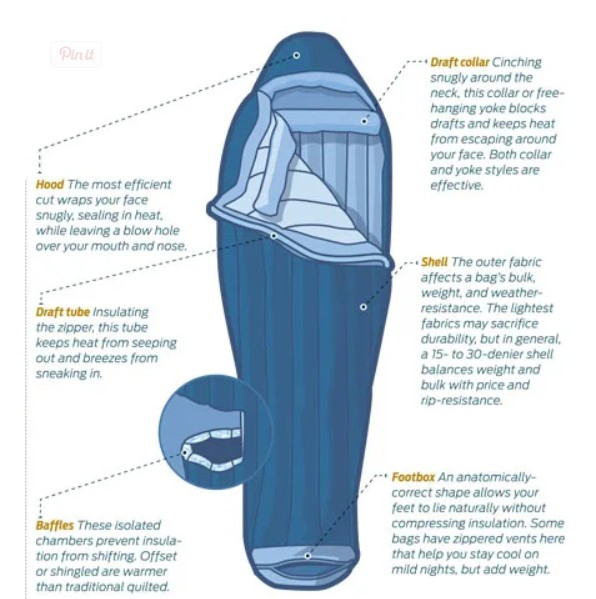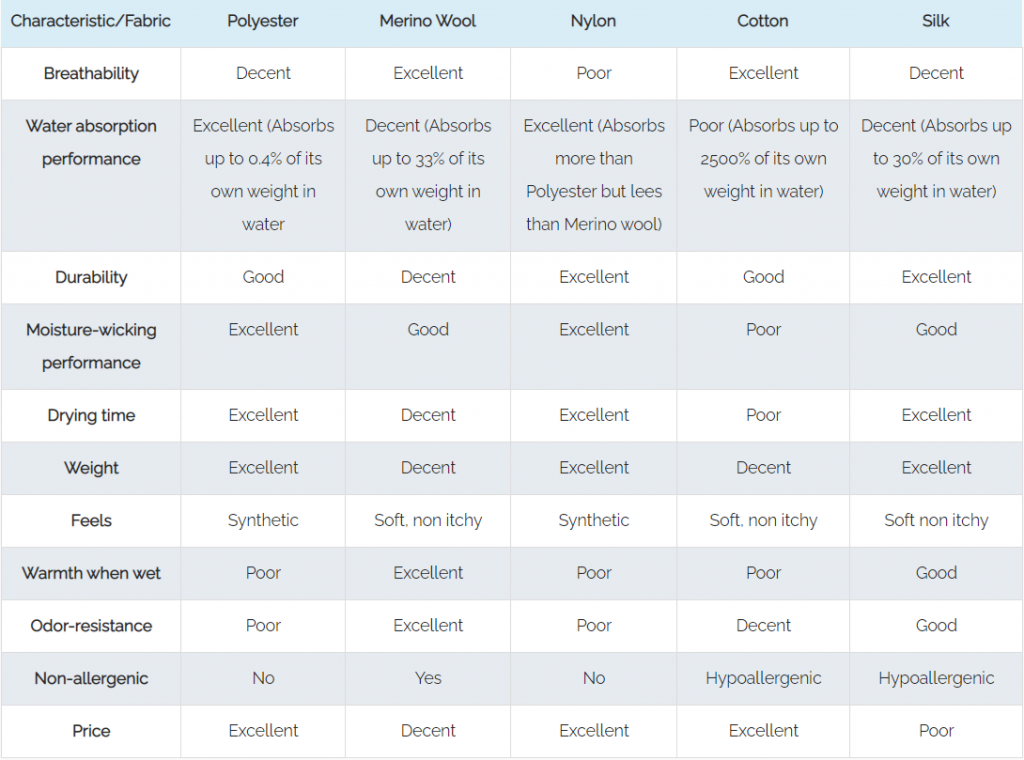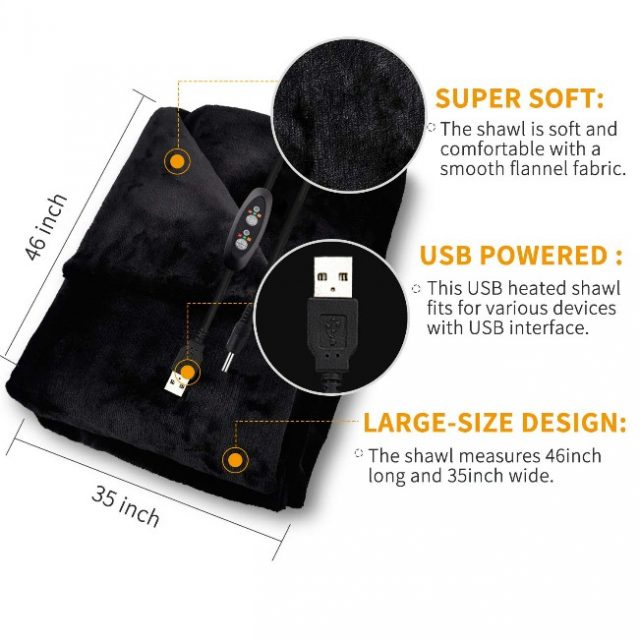So, You Dare to Camp in the Wintertime
Any avid winter adventurer knows that the cold season can be brutal. Among the harshest dangers of winter camping are hypothermia, frostbite, or even worse. To avoid this treacherous scenario, follow these guidelines to learn how to heat a tent to keep your fingers and toes warm all night.
Ten Ways to Heat a Tent
#1 How to Heat a Tent Without Electricity
If you’re wondering how to winterize your tent effectively, there are various ways to keep your tent toasty without the use of electricity, which can be hard to come by during a backpacking trip.
The first (and simplest) step to making sure that you stay warm during your camping trip is to bring the right clothing and gear with you.
You should be sure that you are using a sleeping bag that is appropriately rated for the nightly low temperatures that you will be encountering.

The shape of your sleeping bag also makes a difference, as mummy bags are often better at maintaining their temperature. This is because of the overall space inside the sleeping bag, with rectangle and semi-rectangular bags having more airflow that can make it harder to maintain your body temperature.
The filling type of your sleeping bag also makes a difference and should be a factor when purchasing the bag.
Sleeping bags with down insulation will be more lightweight and compact at the same temperature rating as a sleeping bag with synthetic insulation. However, the synthetic filling is non-allergenic and is better at staying warm when wet. Down filling will require a hydrophobic treatment to have the same effectiveness against water.
With down sleeping bags, look for those with a higher fill power or loft. The loft indicates the amount of “fluffiness” of them down, meaning that it can trap more heat. In other words, the higher the fill power, the less down that is required to achieve a level of warmth. For this reason, sleeping bags with a higher fill power will be more easily compressed into a smaller space.

Also, be sure to bring warm thermal clothing that will reduce changes in your body’s temperature. The most effective fabrics at wicking away moisture from your skin and keeping you warm include fleece, merino wool, silk, polyester, and nylon. Make sure that you bring extra clothing and several layers so that you can sleep in dry clothes.

Also, be sure to consider your tent style. Tents rated as 1-season and 2-season are thinner and meant for summer and spring camping, while 3-season tents are better equipped for fall, when rainstorms and wind may be abundant, and they may be able to withstand some mild winters.
However, if you’re planning on camping in the deep, harsh winter, what you want to look for is the 4-season tent (learn more). These are built with double layers of weatherproofed fabrics, sturdier poles, and snow flaps to stay stable and warm in high winds, snowstorms, and freezing cold low temperatures.
You can also find 5-season tents, also called expedition tents, that are built to be extremely durable even in the heaviest of snow.
Also, keep in mind that the smaller the tent, the easier it will be to maintain its internal warmth.
Other important gear that you should bring includes water bottles with a stainless steel or plastic BPA-free material, a warm hat and scarf, warm gloves, a sleeping pad, an emergency or mylar blanket, and matches. You can also bring an electric blanket and a heater if necessary. We’ll discuss the uses of all this gear in more detail below.
When you’re at your campsite, select a location that will minimize your wind exposure. Try to choose a location that features a natural windbreak, such as an outcropping of boulders, a group of wide trees, or behind another obstacle.

Hold your finger to the wind and determine the wind flow direction. Set up your tent so that its door is facing away from the direction of the wind, if possible.
Now that you know the basics of selecting your gear, clothing, tent, and camping location to maximize your warmth, we’ll review some further steps that you can take to make sure that you don’t have a cold night in your tent.
#2 Heat Your Tent with Hot Water

If you can make a fire, you can boil some water and then fill up a water bottle (like stainless steel or other BPA-free bottles). The water bottle can be sealed tightly and placed next to your body inside your sleeping bag to keep you warm overnight, or at least for a few hours. You can put a sock over the water bottle for added safety, to be sure it doesn’t burn your skin.
Once warmed, the water bottle will effectively radiate heat. You can even use two or three bottles for added warmth or to rotate them.
Here, you can see an example image of a person sleeping with a warm water bottle close to the chest to maintain your core body temperature.

#3 Use Heated Stones to Keep the Tent Warm
If you are camping near a stream or other water source, chances are, there will be an abundance of medium to large stones nearby. Gather several of these rocks and bring them to your campsite. Then, start a fire, and place the rocks around the perimeter of the fire, as shown in this image:

Note: Do not place the stones into the fire itself, because it can be a burn hazard to remove them. Instead, leave 8 to 12 inches between the fire and the stones.
Allow the stones to sit next to the fire for a couple of hours, rotating them every so often so that the center is heated from all sides until it is time for bed and you extinguish the fire.
Then, carefully place the rocks in a fabric or sock wrap so that they won’t be as hot to the touch or burn your tent fabric. Carefully move the rocks into your tent, and place them in the corners or other safe places where you won’t accidentally step on them. The rocks will radiate warmth.
Keep in mind that within a few hours, the rocks will be cold, so you cannot rely solely on this method to keep you warm all night.
#4 Use a Scarf or Balaclava

When camping, it’s important to maintain your core body temperature by making sure that your head stays warm.
To keep your head and neck nice and toasty, you can wear a scarf. Wrap the scarf around your face and neck, but make sure it isn’t so tight that you’ll be too warm. Otherwise, this can cause sweating and heat loss via evaporation.
Here is an instructional image on how to tie a scarf:
A balaclava, or ski mask, is another useful option. The ski mask will have open holes for your eyes and mouth but keeps your head covered so that it stays warm. In this way, you will be extra warm but still can speak and eat.
The balaclava is also a better option for keeping your ears out of the cold. This is important because your ears, which consist of cartilage, have no insulation, and may be prone to frostbite.
With any type of hat, be sure that it is made of a fabric that effectively keeps you warm while wicking away moisture. As discussed earlier, look for fabrics such as merino wool, silk, fleece, nylon, and polyester.
#5 Insulate Your Tent

If you did not purchase an insulated tent, you can use several steps and methods to insulate the tent yourself.
To insulate the floor of your tent, one of the simplest and most convenient ways is to use dry leaves to cover up any small snow patches or other cold spots. This will prevent you from lying directly on the cold ground.
An alternative, and probably more effective and comfortable, the method is to use a sleeping pad to insulate your tent floor. Options include blankets that you can fold and shape around the floor, soft rugs, a reflective aluminum foam sleeping pad, or basically any kind of mat.
The purpose of the sleeping pad is to provide a physical barrier between your body and the cold winter ground, preventing the loss of body heat through conduction.
Here is a video that discusses how to select a sleeping pad:
Now that you’ve insulated the floor of your tent, it’s also important to insulate the walls if possible. You can do this by taping an emergency blanket or a mylar blanket, also known as a space blanket, around the walls of your tent so that it will reflect your body heat back at you.
You can also drape a tarp around the outside of your tent to help further protect it from the wind. Another option is to push some leaves around the outside of your tent to help prevent wind from sweeping under it. These steps combined will really help improve the effectiveness of your tent’s insulation.
#6 Set up Your Tent on Top of a Campfire
Another option for keeping warm is to set up your tent on top of the site of a recent campfire.
To do this, dig a trench roughly the size of your tent, and start a campfire inside of it. Later, after the fire has completely died out, cover up the trench with dirt to create stable, even ground. Then, set up the tent so that it lies over the trench. With this set-up, heat should be released from the area all night long.
Note that obviously you want to be sure that your fire has completely been extinguished and that the area isn’t too hot before you place your tent on top of the site.
Watch this video to see a demonstration of creating a campfire in a trench:
#7 Electric Heaters for Tents

Using a tent heater can effectively keep you warm. Keep in mind that carrying an electric heater may be very inconvenient when backpacking. You will, of course, need a source of electricity, which can be challenging unless you’re camping in an RV park or if you have access to a car battery. Otherwise, you’ll need to bring a portable generator with you, which can be bulky or heavy.
You also need to be cautious of the fire hazard with electric heaters. Be careful to keep flammable objects away from the heater, and turn it off before sleeping or choose a heater with an automatic safety shut-off feature.
#8 Electric Blankets to Keep You Warm

To power your electric blanket, you will need an electrical source as discussed above, which may mean that you’ll be backpacking with a cumbersome portable generator. Alternatively, you can find 12-volt electric blankets that plug into your car, or blankets that heat up via USB connection.
Ideally, the blanket should have a temperature control so that you don’t get too warm.
Electric blankets will lose their conductivity over the years, so they may need to be replaced.
Here is a video of using a battery with an electric blanket to see how long the blanket will keep you warm:
#9 Underfloor Heating Carpets to use with Your Tent
Another interesting option for keeping you toasty in your tent is to use an underfloor heating carpet inside of it. With a heating carpet, just as with an electric heater or electric blanket, you’ll again need an electricity source, which may be less convenient to carry around.
A heated underfloor carpet is designed so that it releases more heat only. At the same time, pressure is put onto it, such as when it is being stood on, rather than continuously generating heat. This helps prevent overheating unnecessarily.
This technology may serve as a better alternative to an electric heater; electric heaters can cause the air to feel too dry over time and pose more of a fire risk. The heated carpet may also be easier to backpack with than a heater, as the carpet may be more lightweight and can be folded into a smaller size.
You can check out this video of the Outwell heated tent carpet for an example:
#10 Portable Electric Radiators

Space heaters utilize different types of heating technology to keep your space warm. An electric radiant heater is best for delivering heat to small spaces like a compact tent because it can most effectively heat the space directly near it without drying out the air so much.
When purchasing, make sure to choose a radiator that is appropriately rated for the size of your tent. The output of electric heaters will be measured in watts. Generally, 10 watts of heating power is needed per square foot of space.
A radiant heater will be quieter than an electric heater with a noisy fan, and it won’t dry out the air as much. However, radiators can also be quite difficult to backpack with and might not feel as warm.

Now, You’re Ready to Stay Warm in Your Tent
I hope these guidelines were helpful in preparing you to face any winter weather. With the tips in this list, you can be ready to keep your tent warm, whether it’s with insulation, the proper sleeping bag, or an electric blanket.
Please share your thoughts in the comments below, and be sure to share this article if you enjoyed it!



